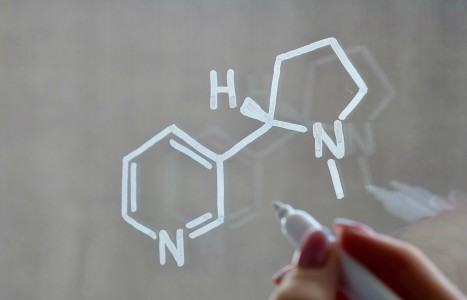Abalone Shell (shi jue ming)
Abutilon Seed (dong kui zi)
Acanthopanax Bark (wu jia pi)
Achyranthes (niu xi)
Aconite (fu zi)
Acorus (shi chang pu)
Adenophora Root (nan sha shen)
Agkistrodon (bai hua she)
Agrimony (xian he cao)
Ailanthus Bark (chun pi)
Akebia Fruit (ba yue zha)
Albizzia Bark (he huan pi)
Albizzia Flower (he huan hua)
Alfalfa (medicago sativa)
Alisma (ze xie)
Aloe (lu hui)
Alum (bai fan)
Amber (hu po)
American Ginseng (xi yang shen)
Ampelopsis (bai lian)
Andrographis (chuan xin lian)
Anemarrhena (zhi mu)
Antelope’s Horn (ling yang jiao)
Apricot Seed (xing ren)
Areca Peel (Da Fu Pi)
Areca Seed (bing lang)
Arisaema (tian nan xing)
Ark Shell (wa leng zi)
Arnebia (zi cao or ying zi cao)
Arnica
Artichoke Leaves (Cynara scolymus)
Ash bark (qin pi)
Ashwagandha (withania somniferum)
Asian Ginseng (dong yang shen)
Aster (zi wan)
Astragalus (huang qi)
Aurantium (zhi ke [qiao])
Bamboo Juice (zhu li)
Bamboo Shavings (zhu ru)
Belamcanda Rhizome (she gan)
Benincasa Peel (dong gua pi)
Benincasa Seed (dong gua xi/ren)
Benzoin (an xi xiang)
Bilberry (yue ju)
Biota Leaf (ce bai ye)
Biota Seed (bai zi ren)
Bitter Melon (ku gua)
Bitter Orange Peel (ju hong)
Black Cohosh (cimicifuga racemosa)
Black Plum (wu mei)
Black Sesame Seeds (hei zhi ma)
Bletilla (bai ji)
Boneset
Borax (peng sha)
Borneol (bing pian)
Bottle Brush (mu zei)
Buddleia (mi meng hua)
Bulrush (pu huang)
Bupleurum (chai hu)
Burdock (niu bang zi)
Camphor (zhang nao)
Capillaris (yin chen hao)
Cardamon Seed (sha ren)
Carpesium (he shi)
Cassia Seed (jue ming zi)
Catechu (er cha)
Cat’s Claw (uncaria tomentosa)
Celosia Seed (qing xiang zi)
Centipede (wu gong)
Cephalanoplos (xiao ji)
Chaenomeles Fruit (mu gua)
Chalcanthite (dan fan)
Chebula Fruit (he zi)
Chinese Gall (wu bei zi)
Chinese Raspberry (fu pen zi)
Chrysanthemum (ju hua)
Cibotium (gou ji)
Cinnabar (zhu sha)
Cinnamon (rou gui / gui zhi)
Cistanche (rou cong rong)
Citron (xiang yuan)
Citrus peel (chen pi)
Clam Shell (hai ge ke/qiao)
Clematis (wei ling xian)
Cloves (ding xiang)
Cnidium seed (she chuang zi)
Codonopsis (dang shen)
Coix Seed (yi yi ren)
Coptis (huang lian)
Cordyceps (dong chong)
Coriander (hu sui)
Corn Silk (yu mi xu)
Cornus (shan zhu yu)
Corydalis (yan hu suo)
Costus (mu xiang)
Cranberry (vaccinium macrocarpon)
Cremastra (shan ci gu)
Croton Seed (ba dou)
Curculigo (xian mao)
Cuscuta (tu si zi)
Cuttlefish Bone (hai piao xiao)
Cymbopogon (xiang mao)
Cynanchum (bai qian)
Cynomorium (suo yang)
Cyperus (xiang fu)
Dalbergia (jiang xiang)
Damiana (turnera diffusa)
Dandelion (pu gong ying)
Deer antler (lu rong)
Dendrobium (shi hu)
Devil’s Claw (harpagophytum procumbens)
Dianthus (qu mai)
Dichroa Root (chang shan)
Dittany Bark (bai xian pi)
Dong Quai (tang kuei)
Dragon Bone (long gu)
Dragon’s Blood (xue jie)
Drynaria (Gu Sui Bu)
Dryopteris (guan zhong)
Earthworm (di long)
Eclipta (han lian cao)
Elder (sambucus nigra or sambucus canadensis)
Elsholtzia (xiang ru)
Ephedra (ma huang)
Epimedium (yin yang huo)
Erythrina Bark (hai tong pi)
Eucalyptus (eucalyptus globulus)
Eucommia bark (du zhong)
Eupatorium (pei lan)
Euphorbia Root (gan sui or kan sui)
Euryale Seed (qian shi)
Evodia (wu zhu yu)
Fennel (xiao hui xiang)
Fenugreek (hu lu ba)
Fermented Soybeans (dan dou chi)
Flaxseed (ya ma zi)
Forsythia (lian qiao)
Fo ti (he shou wu)
Frankincense (ru xiang)
Fritillaria (chuan bei mu)
Gadfly (meng chong)
Galanga (gao liang jiang)
Galena (mi tuo seng)
Gambir (gou teng)
Gardenia (zhi zi)
Garlic (da suan)
Gastrodia (tian ma)
Gelatin (e jiao)
Genkwa (yuan hua)
Gentian (long dan cao)
Germinated Barley (mai ya)
Ginger (gan jiang or sheng jiang)
Ginkgo biloba (yin xing yi)
Glehnia (sha shen)
Glorybower (chou wu tong)
Goldenseal (bai mao liang)
Gotu Kola (luei gong gen)
Green Tea (lu cha)
Gymnema (gymnema sylvestre)
Gynostemma (jiao gu lan)
Gypsum (shi gao)
Halloysite (chi shi zhi)
Hawthorn (shan zha)
Hemp Seed (huo ma ren)
Homalomena (qian nian jian)
Honey (feng mi)
Honeysuckle Flower (jin yin hua)
Honeysuckle Stem (ren dong teng)
Houttuynia (yu xing cao)
Huperzia (qian ceng ta)
Hyacinth Bean (bai bian dou)
Hyssop (huo xiang)
Ilex (mao dong qing)
Imperata (bai mao gen)
Indigo (qing dai)
Inula (xuan fu hua)
Isatis Leaf (da qing ye)
Isatis Root (ban lan gen)
Java Brucea (ya dan zi)
Jujube (da zao)
Juncus (deng xin cao)
Kadsura Stem (hai feng teng)
Katsumadai Seed (cao dou kou)
Kelp (kun bu)
Knotweed (bian xu)
Knoxia root (hong da ji)
Kochia (di fu zi)
Lapis (meng shi)
Leechee Nut (li zhi he)
Leech (shui zhi)
Leonorus (yi mu cao)
Lepidium Seed (ting li zi)
Licorice (gan cao)
Ligusticum (chuan xiong)
Ligustrum (nü zhen zi)
Lily Bulb (bai he)
Limonite (yu liang shi)
Lindera (wu yao)
Litsea (bi cheng qie)
Lobelia (ban bian lian)
Longan (long yan hua or long yan rou)
Lophatherum (dan zhu ye)
Loquat Leaf (pi pa ye)
Lotus Leaf (he ye)
Lotus Node (ou jie)
Lotus Seed (lian zi)
Lotus Stamen (lian xu)
Luffa (si gua luo)
Lycium Bark (di gu pi)
Lycium Fruit (gou qi zi)
Lygodium (hai jin sha)
Lysimachia (jin qian cao)
Magnetite (ci shi)
Magnolia Bark (hou po)
Magnolia Flower (xin yi hua)
Maitake
Marigold (jin zhan ju)
Massa Fermentata (shen qu)
Milk Thistle (silybum marianum)
Millettia (ji xue teng)
Mint (Bo He)
Mirabilite (mang xiao)
Morinda root (ba ji tian)
Mugwort Leaf (ai ye)
Mulberry Bark (sang bai pi)
Mulberry Leaf (sang ye)
Mulberry Twig (sang zhi)
Mullein (jia yan ye)
Myrrh (mo yao)
Notoginseng (san qi)
Notopterygium (qiang huo)
Nutmeg (rou dou kou)
Oldenlandia (bai hua she she cao)
Omphalia (lei wan)
Onion (yang cong)
Ophicalcite (hua rui shi)
Ophiopogon (mai dong)
Oroxylum Seed (mu hu die)
Oryza (gu ya)
Oyster Shell (mu li)
Passion Flower (passiflora incarnata)
Patrinia (bai jiang cao)
Pau D’Arco (tabebuia avellanedae)
Peach Seed (tao ren)
Pearl (zhen zhu/zhen zu mu)
Perilla Leaf (su ye)
Perilla Seed (su zi)
Perilla Stem (su geng)
Persimmon (shi di)
Pharbitis Seed (qian niu zi)
Phaseolus (chi xiao dou)
Phellodendron (huang bai)
Phragmites (lu gen)
Picrorhiza (hu huang lian)
Pine Knots (song jie)
Pinellia (ban xia)
Pipe Fish (hai long)
Plantain Seed (che qian zi)
Platycodon (jie geng)
Polygala (yuan zhi)
Polygonatum (huang jing)
Polyporus (zhu ling)
Poppy Capsule (ying su qiao)
Poria (fu ling)
Prickly Ash Peel (hua jiao)
Prinsepia Seed (rui ren/zi)
Prunella (xia ku cao)
Prunus Seed (yu li ren)
Pseudostellaria (tai zi shen)
Psoralea (bu gu zhi)
Pueraria
Pulsatilla (bai tou weng)
Pumice (fu hai shi)
Pumpkin Seed (Nan Gua Zi)
Purslane (ma chi xian)
Pyrite (zi ran tong)
Pyrrosia Leaf (shi wei)
Quisqualis (shi jun zi)
Radish (lai fu zi)
Realgar (xiong huang)
Red Atractylodes (cang zhu)
Red clover (trifolium pratense)
Red Ochre (dai zhe shi)
Red peony (chi shao)
Red Sage Root (dan shen)
Rehmannia (shu di huang or sheng di huang)
Reishi (ling zhi)
Rhubarb (da huang)
Rice Paper Pith (tong cao)
Rosemary (mi die xiang)
Rose (mei gui hua)
Safflower (hong hua)
Saffron (fan hong hua)
Sandalwood (tan xiang)
Sanguisorba Root (di yu)
Sappan Wood (su mu)
Sargent Gloryvine (hong teng)
Saw Palmetto (serenoa serrulata)
Schefflera (qi ye lian)
Schisandra (wu-wei-zi)
Schizonepeta (jing jie)
Scirpus (san leng)
Scopolia (S. carniolica Jacq.)
Scorpion (quan xie)
Scrophularia (xuan shen)
Scutellaria (huang qin)
Sea Cucumber (hai shen)
Sea Horse (hai ma)
Seaweed (hai zao)
Selaginella (shi shang bai)
Senna (fan xie ye)
Shiitake (hua gu)
Siberian Ginseng (wu jia shen)
Siegesbeckia (Xi Xian Cao)
Siler Root (Fang Feng)
Slippery Elm (ulmus fulva)
Smilax (tu fu ling)
Smithsonite (lu gan shi)
Sophora Flower (huai hua mi)
Sophora Root (ku shen)
Spirodela (fu ping)
Stellaria (yin chai hu)
Stemona (bai bu)
Stephania (fang ji [han])
Sweet annie (qing hao)
Teasel Root (xu duan)
Torreya Seed (fei zi)
Tremella (bai mu er)
Trichosanthes Fruit (gua lou)
Trichosanthes Root (Tian Hua Fen)
Trichosanthes Seed (gua lou ren)
Tsaoko Fruit (cao guo)
Turmeric (jiang huang)
Tussilago (kuan dong hua)
Urtica (xun ma)
Uva ursi (arctostaphylos uva-ursi)
Vaccaria Seed (wang bu lui xing)
Valerian (jie cao)
Veratrum (li lu)
Viola (zi hua di ding)
Vitex (man jing zi)
Walnut (hu tao ren)
Watermelon (xi gua)
White Atractylodes (bai zhu)
White Mustard Seed (Bai Jie Ze)
White peony (bai saho)
Wild asparagus (tian men dong)
Windmill Palm (zong lu pi/tan)
Xanthium Fruit (cang er zi)
Zedoary (e zhu)
Realgar (xiong huang)
What is realgar? What is it used for?
Realgar is not an herb, but a mineral, comprised primarily of arsenic and sulphur. It has a reddish-orange color and is usually found in ore veins. In China, realgar is found mainly in the provinces of Guizhou, Hunan, Sichuan and Yunnan. After being mined, any impurities are removed, after which it is ground into a fine powder for use.
Realgar has acrid, bitter, warm, and toxic characteristics, according to the principles of traditional Chinese medicine, and is affiliated with the Heart, Liver and Stomach meridians. It is used internally to kill intestinal parasites and treat sore throats, and is applied externally to treat swelling, abscesses, itching, rashes, and other skin disorders.
How much realgar should I take?
The typical internal dose of realgar is between 0.2 and 0.4 grams, decocted in water and taken up to two times per day. Some practitioners may recommend slightly higher doses (0.3-0.9 grams). Larger doses of realgar may be used if it is being applied topically.
What forms of realgar are available?
The most common form of realgar is as a powder, which can be found at some specialty stores, and even some herbal shops. Realgar is also available in pill, capsule and tablet form, and is sometimes incorporated with other substances into a larger formula.
What can happen if I take too much realgar? Are there any interactions I should be aware of? What precautions should I take?
Because realgar contains arsenic, it should not be used by women who are pregnant or breastfeeding, nor should it be administered to infants or small children. In addition, realgar should not be processed through calcinations; doing so will make it highly toxic. Although realgar can be applied to the skin, it should not be used on large areas or for prolonged periods of time. Extensive use can lead to arsenic poisoning.
As of this writing, there are no known drug interactions associated with realgar. As always, make sure to consult with a licensed health care provider before taking realgar or any other herbal remedy or dietary supplement.
References
- Chen JK, Chen TT. Chinese Medical Herbology and Pharmacology. City of Industry, CA: Art of Medicine Press, 2004, pp. 1039-1041.
- Deng Y, Xu H, Huang K, et al. Size effects of realgar particles on apoptosis in a human umbilical vein endothelial cell line: ECV-304. Pharmacol Res December 2001;44(6):513-8.
- Ning N, Peng ZF, Yuan L, et al. Realgar nano-particles induce apoptosis and necrosis in leukemia cell lines K562 and HL-60. Zhongguo Zhong Yao Za Zhi January 2005;30(2):136-40.
- Pan B, Xu L, Yang X. Advances in the study on antineoplastic action of realgar. Zhong Yao Cai March 2004;27(3):226-9.
- Wang JH, Ye ZG, Liang AH, et al. Absorption and distribution of mercury and arsenic from realgar and cinnabar of angong niuhuang pill in normal rats and rats with cerebral ischemia. Zhongguo Zhong Yao Za Zhi July 2003;28(7):639-42.


